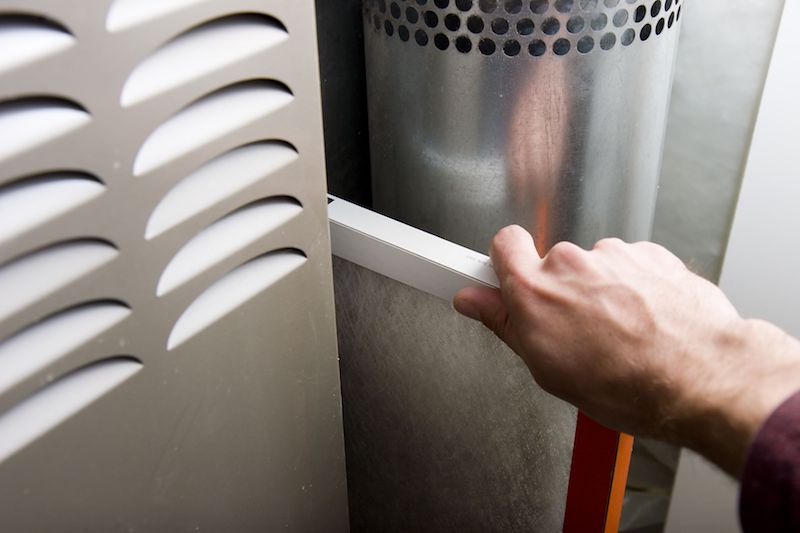
If you’re questioning whether your Thedford home has unhealthy indoor air quality (IAQ), it possibly does.
We are indoors a lot. In fact, we’re in a building up to 90% of the time, according to the U.S. Environmental Protection Agency. And the air inside houses could be 2–5 times more contaminated than outdoors, which may create long-term health concerns.
Most Common Sources of Unsatisfactory IAQ
We’ve made a list of the most ordinary causes of bad IAQ, the troubles they make and how you can fix these indoor air pollutants. If you’re worried about the air inside your residence, we suggest chatting with a specialist like Taylor's Heating & Air Conditioning about which products are ideal for your home.
Volatile Organic Compounds
Volatile organic compounds, or VOCs, are chemicals released by common household things.
They’re found in paint and stains in addition to:
- Furniture
- Carpet
- Building materials
- Cleaning products
- Cosmetics
- Air fresheners
- Candles
When these chemicals accumulate inside, they can irritate your eyes, nose and throat. They may also cause headaches and nausea. Regardless of whether your residence is in a rural or industrial space, an EPA study found indoor levels of these pollutants can be 2–5 times worse than the air outside your home.
Always use the manufacturer’s directions when applying paint or spraying cleaning products. Opening a window can help chemicals disappear faster.
Air purification systems can also help. This equipment partners with your heating and cooling equipment to improve indoor air. When looking for one, ensure it’s specifically made to wipe out VOCs.
Dust and Pet Dander
Dust and pet dander can aggravate health problems like asthma and allergies, especially when it constantly gets redistributed by your residence’s comfort equipment. While you can vacuum more frequently and install an improved air filter, an air filtration system may be a better fit.
This solution hooks to your comfort equipment to provide powerful filtration. Some types offer hospital-level filtration for getting rid of particles and bioaerosols.
Persistent Odors
Newer homes are tightly sealed to boost energy efficiency. While this is fantastic for your heating and cooling expenses, it’s not ideal for your IAQ.
Stuffy odors can stay around for a greater amount of time since your residence is pulling in a smaller amount of fresh air. Because keeping your windows open all the time isn’t a possibility, here are two ways you can make your indoor air smell cleaner.
An air purification system is put in your ductwork to eliminate odors before they are redistributed. Search for one with a carbon filter and the power to wipe out harmful VOCs. This equipment can also help keep your loved ones healthy by wiping out most bacteria and ordinary allergy triggers like pollen and mold spores.
A ventilation system takes out stuffy indoor air and replaces it with clean outdoor air. There are two models of units (heat recovery and energy recovery), so check with our professionals for more details on which solution is ideal for your home.
Uneven Humidity
It’s important your home’s humidity stays even. Air that’s too moist can lead to mold, while dry air can create respiratory troubles.
Our specialists suggest 40–50% for top comfort. To keep yours in balance, think about getting a whole-home humidifier or whole-home dehumidifier with your HVAC unit.
Rather than having to pull a humidifier from room to room, this equipment delivers balanced humidity around your house.
Carbon Monoxide
Carbon monoxide is colorless gas you can’t smell. It’s a byproduct of insufficient combustion in fuel-burning equipment, like gas heating systems, water heaters or fireplaces.
It causes a severe health risk. In small levels, it can cause flu-like sickness like headaches and nausea. It may be lethal in big concentrations.
We recommend yearly furnace maintenance to ensure your unit is working properly. This service allows our techs to spot issues before they get bigger, including malfunctions that can create carbon monoxide leaks.
The best approach to keep your residence free of carbon monoxide is to put in detectors. These alarms must be on every floor by bedrooms and living areas.
Enhance Your Residence’s Air Quality with the Taylor's Heating & Air Conditioning Pros
Know that your residence has poor air quality but not sure how to improve it? Or unsure which option is ideal for you? Give our approachable HVAC experts a call at 519-296-4437 or contact us online right away. With free estimates and pro assistance, we’ll help you find the right solution for your needs and budget.
